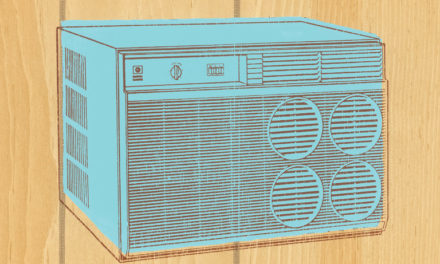While most people know that physical activity is healthy, it’s estimated that about 30% of people worldwide don’t get enough (1).
Unless you have a physically demanding job, a dedicated fitness routine is likely your best bet for getting active.
Unfortunately, many people feel that they don’t have enough time to exercise (2, 3).
If this sounds like you, maybe it’s time to try high-intensity interval training (HIIT).

HIIT is a broad term for workouts that involve short periods of intense exercise alternated with recovery periods.
One of the biggest advantages of HIIT is that you can get maximal health benefits in minimal time.
This article explains what HIIT is and examines 7 of its top health benefits.
What Is High-Intensity Interval Training?
HIIT involves short bursts of intense exercise alternated with low-intensity recovery periods. Interestingly, it is perhaps the most time-efficient way to exercise (4, 5).
Typically, a HIIT workout will range from 10 to 30 minutes in duration (4).
Despite how short the workout is, it can produce health benefits similar to twice as much moderate-intensity exercise (6, 7).
The actual activity being performed varies but can include sprinting, biking, jump rope or other body weight exercises.
For example, a HIIT workout using a stationary exercise bike could consist of 30 seconds of cycling as fast as possible against high resistance, followed by several minutes of slow, easy cycling with low resistance.
This would be considered one “round” or “repetition” of HIIT, and you would typically complete 4 to 6 repetitions in one workout (4).
The specific amount of time you exercise and recover will vary based on the activity you choose and how intensely you are exercising.
Regardless of how it is implemented, high-intensity intervals should involve short periods of vigorous exercise that make your heart rate speed up (4, 8).
Not only does HIIT provide the benefits of longer-duration exercise in a much shorter amount of time — it may also provide some unique health benefits (4).
1. HIIT Can Burn a Lot of Calories in a Short Amount of Time

You can burn calories quickly using HIIT (9, 10).
One study compared the calories burned during 30 minutes each of HIIT, weight training, running and biking.
The researchers found that HIIT burned 25–30% more calories than the other forms of exercise (9).
In this study, a HIIT repetition consisted of 20 seconds of maximal effort, followed by 40 seconds of rest.
This means that the participants were actually only exercising for 1/3 of the time that the running and biking groups were.
Although each workout session was 30 minutes long in this study, it is common for HIIT workouts to be much shorter than traditional exercise sessions.
This is because HIIT allows you to burn about the same amount of calories, but spend less time exercising.
Summary: HIIT may help you burn more calories than traditional exercise, or burn the same amount of calories in a shorter amount of time.
2. Your Metabolic Rate Is Higher for Hours After Exercise
One of the ways HIIT helps you burn calories actually comes after you are done exercising.
Several studies have demonstrated HIIT’s impressive ability to increase your metabolic rate for hours after exercise (11, 12, 13).
Some researchers have even found that HIIT increases your metabolism after exercise more so than jogging and weight training (11).
In the same study, HIIT was also found to shift the body’s metabolism toward using fat for energy rather than carbs.
Another study showed that just two minutes of HIIT in the form of sprints increased metabolism over 24 hours as much as 30 minutes of running (14).
Summary: Due to the intensity of the workout, HIIT can elevate your metabolism for hours after exercise. This results in additional calories being burned even after you have finished exercising.
3. It Can Help You Lose Fat

Studies have shown that HIIT can help you lose fat.
One review looked at 13 experiments and 424 overweight and obese adults.
Interestingly, it found that both HIIT and traditional moderate-intensity exercise can reduce body fat and waist circumference (15).
Additionally, one study found that people performing HIIT three times per week for 20 minutes per session lost 4.4 pounds, or 2 kgs, of body fat in 12 weeks — without any dietary changes (16).
Perhaps more important was the 17% reduction in visceral fat, or the disease-promoting fat surrounding your internal organs.
Several other studies also indicate that body fat can be reduced with HIIT, despite the relatively low time commitment (17, 18, 19).
However, like other forms of exercise, HIIT may be most effective for fat loss in those who are overweight or obese (20, 21).
Summary: High-intensity intervals can produce similar fat loss to traditional endurance exercise, even with a much smaller time commitment. They can also reduce unhealthy visceral fat.
4. You Might Gain Muscle Using HIIT
In addition to helping with fat loss, HIIT could help increase muscle mass in certain individuals (16, 21, 22, 23).
However, the gain in muscle mass is primarily in the muscles being used the most, often the trunk and legs (16, 21, 23).
Additionally, it’s important to note that increases in muscle mass are more likely to occur in individuals who were less active to begin with (24).
Some research in active individuals has failed to show higher muscle mass after HIIT programs (25).
Weight training continues to be the “gold standard” form of exercise to increase muscle mass, but high-intensity intervals could support a small amount of muscle growth (24, 26).
Summary: If you are not very active, you may gain some muscle by starting HIIT but not as much as if you performed weight training.
5. HIIT Can Improve Oxygen Consumption

Oxygen consumption refers to your muscles’ ability to use oxygen, and endurance training is typically used to improve your oxygen consumption.
Traditionally, this consists of long sessions of continuous running or cycling at a steady rate.
However, it appears that HIIT can produce the same benefits in a shorter amount of time (20, 21, 27).
One study found that five weeks of HIIT workouts performed four days per week for 20 minutes each session improved oxygen consumption by 9% (6).
This was almost identical to the improvement in oxygen consumption in the other group in the study, who cycled continuously for 40 minutes per day, four days per week.
Another study found that eight weeks of exercising on the stationary bike using traditional exercise or HIIT increased oxygen consumption by about 25% (7).
Once again, the total time exercising was much different between groups: 120 minutes per week for the traditional exercise versus only 60 minutes per week of HIIT.
Additional studies also demonstrate that HIIT can improve oxygen consumption (25, 28).
Summary: High-intensity interval training can improve oxygen consumption as much as traditional endurance training, even if you only exercise about half as long.
6. It Can Reduce Heart Rate and Blood Pressure

HIIT may have important health benefits, as well.
A large amount of research has indicated that it can reduce heart rate and blood pressure in overweight and obese individuals, who often have high blood pressure (20).
One study found that eight weeks of HIIT on a stationary bike decreased blood pressure as much as traditional continuous endurance training in adults with high blood pressure (7).
In this study, the endurance training group exercised four days per week for 30 minutes per day, but the HIIT group only exercised three times per week for 20 minutes per day.
Some researchers have found that HIIT may even reduce blood pressure more than the frequently recommended moderate-intensity exercise (29).
However, it appears that high-intensity exercise does not typically change blood pressure in normal-weight individuals with normal blood pressure (20).
Summary: HIIT can reduce blood pressure and heart rate, primarily in overweight or obese individuals with high blood pressure.
7. Blood Sugar Can Be Reduced by HIIT
Blood sugar can be reduced by HIIT programs lasting less than 12 weeks (20, 30).
A summary of 50 different studies found that not only does HIIT reduce blood sugar, but it also improves insulin resistance more than traditional continuous exercise (31).
Based on this information, it is possible that high-intensity exercise is particularly beneficial for those at risk for type 2 diabetes (31).
In fact, some experiments specifically in individuals with type 2 diabetes have demonstrated the effectiveness of HIIT for improving blood sugar (32).
However, even research in healthy individuals indicates that HIIT may be able to improve insulin resistance more than traditional continuous exercise (27).
Summary: High-intensity interval training may be especially beneficial for those needing to improve blood sugar and insulin sensitivity. These improvements have been seen in both healthy and ailing individuals.
How to Get Started With HIIT

There are many ways to add high-intensity intervals to your exercise routine, so it isn’t hard to get started.
To begin, you just need to choose your activity (running, biking, jumping, etc.).
Then, you can experiment with different durations of exercise and recovery, or how long you are performing intense exercise and how long you are recovering.
Here are a few simple examples of HIIT workouts:
- Using a stationary bike, pedal as hard and fast as possible for 30 seconds. Then, pedal at a slow, easy pace for two to four minutes. Repeat this pattern for 15 to 30 minutes.
- After jogging to warm up, sprint as fast as you can for 15 seconds. Then, walk or jog at a slow pace for one to two minutes. Repeat this pattern for 10 to 20 minutes.
- Perform squat jumps as quickly as possible for 30 to 90 seconds. Then, stand or walk for 30 to 90 seconds. Repeat this pattern for 10 to 20 minutes.
While these examples can get you started, you should modify your own routine based on your own preferences.
Summary: There are many ways to implement HIIT into your exercise routine. Experiment to find which routine is best for you.
The Bottom Line
High-intensity interval training is a very efficient way to exercise, and may help you burn more calories than you would with other forms of exercise.
Some of the calories burned from high-intensity intervals come from a higher metabolism, which lasts for hours after exercise.
Overall, HIIT produces many of the same health benefits as other forms of exercise in a shorter amount of time.
These benefits include lower body fat, heart rate and blood pressure. HIIT may also help lower blood sugar and improve insulin sensitivity.
So, if you are short on time and want to get active, you may want to consider trying high-intensity interval training.






